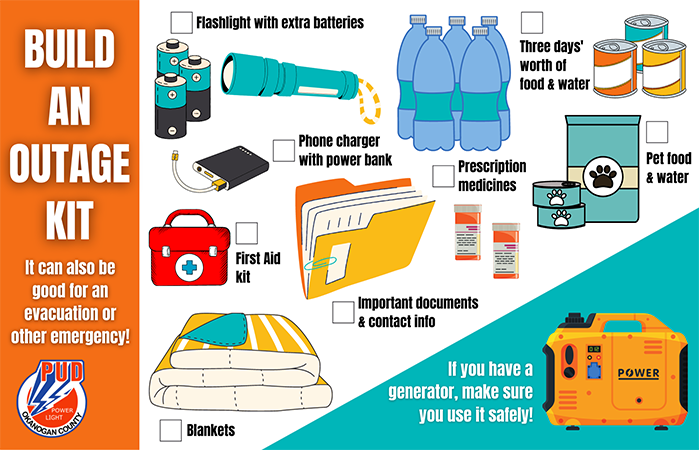 We might not think about this too much when it’s a nice spring day, but it’s always a good idea to have an outage kit ready – especially if the outage is related to a natural disaster and you might have to leave your home. A good outage kit could include:
We might not think about this too much when it’s a nice spring day, but it’s always a good idea to have an outage kit ready – especially if the outage is related to a natural disaster and you might have to leave your home. A good outage kit could include:
- Flashlight with extra batteries
- Cell phone charger with power bank
- Three days’ worth of water
- Three days’ worth of nonperishable food
- Contact information for your utility and other important services
- First Aid kit
- Important documents
- Prescription medications
- Food and water for pets
For winter outages, add warm clothing and blankets.
For summer outages, add more water, a battery-powered fan and sunscreen.
There are plenty of other things to consider for these kits, and Ready.gov has multiple resources and suggestions to help prepare.
And if there is an outage, it’s a good idea to unplug your electronics, such as televisions and computers. Sometimes when the power comes back, it can cause a power surge that can damage those devices. Another option is to install surge protectors.
Also, when the power goes off, make sure any appliances you had turned on get switched off – ovens, curling irons, griddles, etc. When the power comes back on, if those are still switched on, they’ll start heating up again and be a safety hazard.
Finally, if you have a generator, make sure it is installed properly. Never plug it into an electrical outlet to power your home – it can cause backfeed that could energize power lines and injure or kill utility workers repairing the lines. Contact an electrician if you aren’t sure if your generator is safe to use, and follow all manufacturer guidelines.